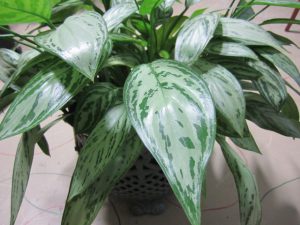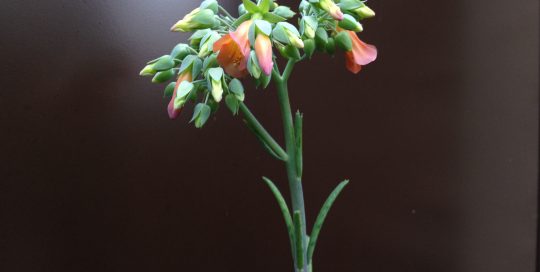Breathe Easy with Houseplants
Views: 4329

We all know (or should know) that plants absorb carbon dioxide and release oxygen as part of a process called photosynthesis. Lucky us, since carbon dioxide is the very thing we expel when we breathe out. Oxygen is what we need to take another breath. Pretty neat system, huh? If that’s not enough of a reason to get a few houseplants, did you also know that they are capable of absorbing other common indoor pollutants from the air? And that those common pollutants are the very same ones released by building materials like carpet, paint, and wallpaper?
But wait, it gets even better.
Many of the plants that are most capable of absorbing these indoor pollutants are also the most readily available and easiest to care for. What more could a person want?
Benzene, Trichloroethylene, and Formaldehyde
In 1989, NASA conducted a study to determine the effectiveness of certain houseplants at removing three common pollutants from indoor air: benzene, trichloroethylene, and formaldehyde. Buildings constructed with synthetic materials, especially new ones, off-gas a certain amount of these three chemicals, among others. Benzene is found in paint, solvents, ink, plastics, and rubber and has been linked to birth defects, blood diseases, cancer, and more. Trichloroethylene is used mostly in metal cleaners and dry cleaning. It is also found in paints, inks, and adhesives and has been linked to liver cancer. Formaldehyde is found in pressed wood products, drapery, glues, and paints and has been linked to asthma and throat cancer.
The concentration of these pollutants is often higher in new buildings for two reasons:
1. Building materials emit more gases the newer they are
2. Modern buildings (built after the 1970s) are much more tightly sealed. This is great for energy efficiency, but bad for indoor air quality. There is even such a thing as sick building syndrome. This is when occupants experience health problems that are linked to poor indoor air quality.
Common Pollutant-Reducing Houseplants
The results found that some plants are capable of reducing certain pollutants by 70 percent or more in a 24-hour period. They also found that it’s not just the leaves doing the work! Even the roots and soil play a role in purifying indoor air.
The top performers include common houseplants such as Dracaena, Peace Lily, Bamboo Palm, and Mother-in-law’s Tongue. Honorable mentions go to Pothos, Philodendron, Ficus, Chinese Evergreen, English Ivy, and Spider plants.
All of these plants are pretty tough and suitable for novice indoor gardeners. For those cursed with really brown thumbs, the absolute easiest plant to care for on this list is Mother-in-law’s Tongue (Sansevieria). To maximize benefits, use plants that are at least in a 6 to 8 inch pot and place one per 100 square feet, or approximately one in each room.
Meet Abbi Hayes
Abbi's Recent Posts

Kalanchoe delagoensis: Mother of Millions







